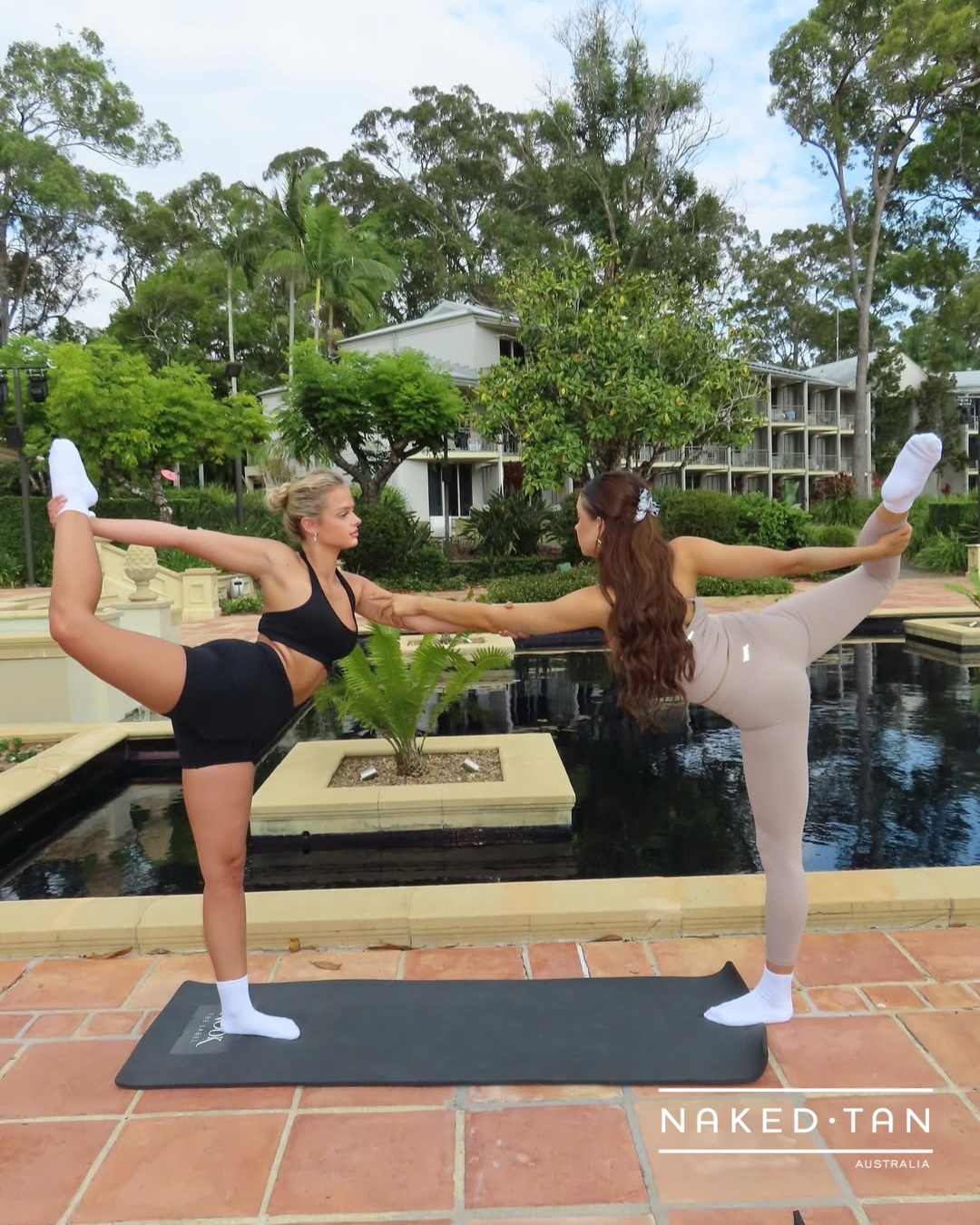Why Your Fake Tan Isn’t Showing Up – And What You Can Fix

Why Your Fake Tan Isn’t Showing Up – And What You Can Fix
Quick Overview
Your fake tan works when a special tanning ingredient in your product meets the top layer of your skin, and they react together to create a brown colour. If nothing appears, it usually means something got in the way of that reaction – like too much moisture, the skin being too fresh or too exfoliated, or maybe hormones or medications changing your skin. This guide walks you through what might be going on and how to adjust things.
What’s Actually Happening Beneath the Surface
When you apply a self-tanning product (with an ingredient called DHA), it reacts in your outermost skin layer (called the stratum corneum) to form a tan-looking colour.
Here are two key things that help this reaction:
-
Skin dryness vs. moisture: If your skin is too hydrated (wet, sweaty, damp), the reaction is weaker.
-
Skin surface environment: Things like your skin’s pH (how acidic or alkaline it is) and how fresh or thick the top layer is can affect how well the tan forms.
In plain terms: for the best result, you want your skin to be dry, balanced, and stable when you apply your tan.
Common Reasons Your Tan Isn’t Showing Up — With Easy Fixes
1) You applied while your skin was damp or you sweated after
If you’ve just showered hot, done exercise, or it’s humid and you’re sweating, your skin’s outer layer is too hydrated — the tan doesn’t develop properly.
Fix: Make sure your skin is completely dry and cool before applying. After applying, try to avoid sweating, heavy heat, or long baths for the time the tan is developing.
2) You used thick creams or oils right before applying
Heavy moisturisers or oils can create a barrier, stopping the tanning ingredient from reaching the skin layer it needs to.
Fix: On tan-day, skip the heavy cream. If you need to moisturise dry spots (like ankles/knees), use a light, fast-absorbing lotion and give it time to soak in.
3) You rinsed the tan off too soon or spent too long in the bath
Most of the colour forms within the first few hours after applying. If you rinse too early or soak in a bath (which hydrates skin) you reduce the result.
Fix: Follow the product instructions exactly for how long to leave it on. After that time, rinse gently and quickly. Avoid long baths during development.
4) Your skin cleanser or soap changed your skin’s surface too much
Some heavy or strong soaps raise the skin’s pH (make it more alkaline) or strip the outer layer. That messes with the reaction.
Fix: Before tanning, use a gentle body wash or cleanser. Avoid harsh scrubs or gels right beforehand.
5) You exfoliated or shaved just before tanning
Exfoliating or shaving can change the thickness and surface of the top layer of skin – that sounds good for a smooth finish, but if it's too fresh or too thin the tanning reaction can be less consistent.
Fix: Exfoliate and shave the day before you apply your tan, rather than immediately before.
6) You’re on certain medications or hormones
If you take a medication like Isotretinoin that dries the skin a lot, or you’re on a hormone contraceptive that changes your skin’s behaviour (more dry, more oily), you might find your skin responds differently to tan products.
Fix: Give your skin a little extra prep time — maybe use the lighter moisturiser in advance, and adjust how often you re-tan. It’s about understanding how your skin is behaving now.
7) Hormone shifts and your cycle
Some people find their skin texture, oiliness, or dryness shifts through the month (e.g., around their period). If your skin is drier or more sensitive at certain times, your tan might behave differently. Research shows some people are affected, but it’s not universal.
Fix: Pay attention to your skin across the month. If you notice that e.g. pre-period tends to give patchy results, plan your tan a little earlier or slightly adjust your prep (e.g., extra light moisturiser, ensure full dryness) during that window.
8) Your product is older, weaker, or not strong enough for your desired depth
Over time DHA can degrade, and formulas differ in strength. If you’re expecting a deep tan but your product is at the lighter end, results will be light.
Fix: Use a fresh product, check the “develop” instructions (some formulas need two nights or stronger strength), and store product in a cool, dry spot.
9) Residue from body-washes, deodorants or other products
If you have residue (from heavy body washes, deodorants, etc) on your skin before applying the tan, it can interfere with how evenly the product applies and develops.
Fix: Use a simple, clean body wash before applying your tan. Make sure your underarms, groin, feet – all the “trouble spots” – are clean and dry.
10) Unrealistic expectations for very deep results in one go
Some people expect “holiday-bronze” in one go, but depending on your natural skin tone, the product strength, and your skin’s condition, the result might be lighter than “instant tan” looks.
Fix: Understand your starting canvas and either do 2 nights of product or move up to a deeper formula if you want a stronger shade.
How to Set Yourself Up for a Good Tan Day
-
Day before: Exfoliate gently, shave or wax. Use a mild body wash; finish with a light moisturiser and let it soak in.
-
Tan-day: Be totally dry, cool, and avoid steam. Skip heavy oils/creams. Apply your tan evenly.
-
After applying: Avoid sweating, hot baths, steam rooms, or tight fabric friction for the specified time your product needs to develop.
-
First rinse: Use a short, lukewarm rinse at the right time. Pat dry; don’t scrub.
-
Maintenance: Use a decent body moisturiser daily (after your rinse) to slow natural skin shedding. Avoid heavy exfoliation or strong acid/retinoid use on the body until after you have your first wear.
-
Track your skin: If your skin changes (meds, hormones, weather), adjust. For example: if you’re on a drying medication → you might need softer prep; if you’re in extremely humid weather → make sure you apply when you’re cool and dry.
Quick FAQ
Q: “Can sweat ruin my fake tan?”
A: Not once it’s fully developed — but if you sweat during the development window (when the colour is still forming), you might hinder the process and get patchy or light results.
Q: “Why is my tan patchy under my arms or between thighs?”
A: Because those areas often have more moisture, friction, or residue (deodorant, body wash). Make sure they’re clean, dry, and free of heavy product before applying.
Q: “Does my period really affect my fake tan?”
A: Possibly, for you. Some skin changes happen due to hormonal shifts (oiliness, dryness, barrier changes). But for many people there’s no noticeable difference. It’s about paying attention to your skin’s pattern and adjusting accordingly.
If your fake tan isn’t developing, it’s rarely because you did something wildly wrong—it’s more about some small barrier interfering with the simple chemistry of the tan reaction. With a few tweaks (clean dry skin, right timing, avoiding heavy creams/heat/sweat, looking after your skin’s health) you’ll see much more consistent results.
Think of tanning prep and maintenance like cleaning the canvas before painting—the smoother the start, the better the finish.




Comments